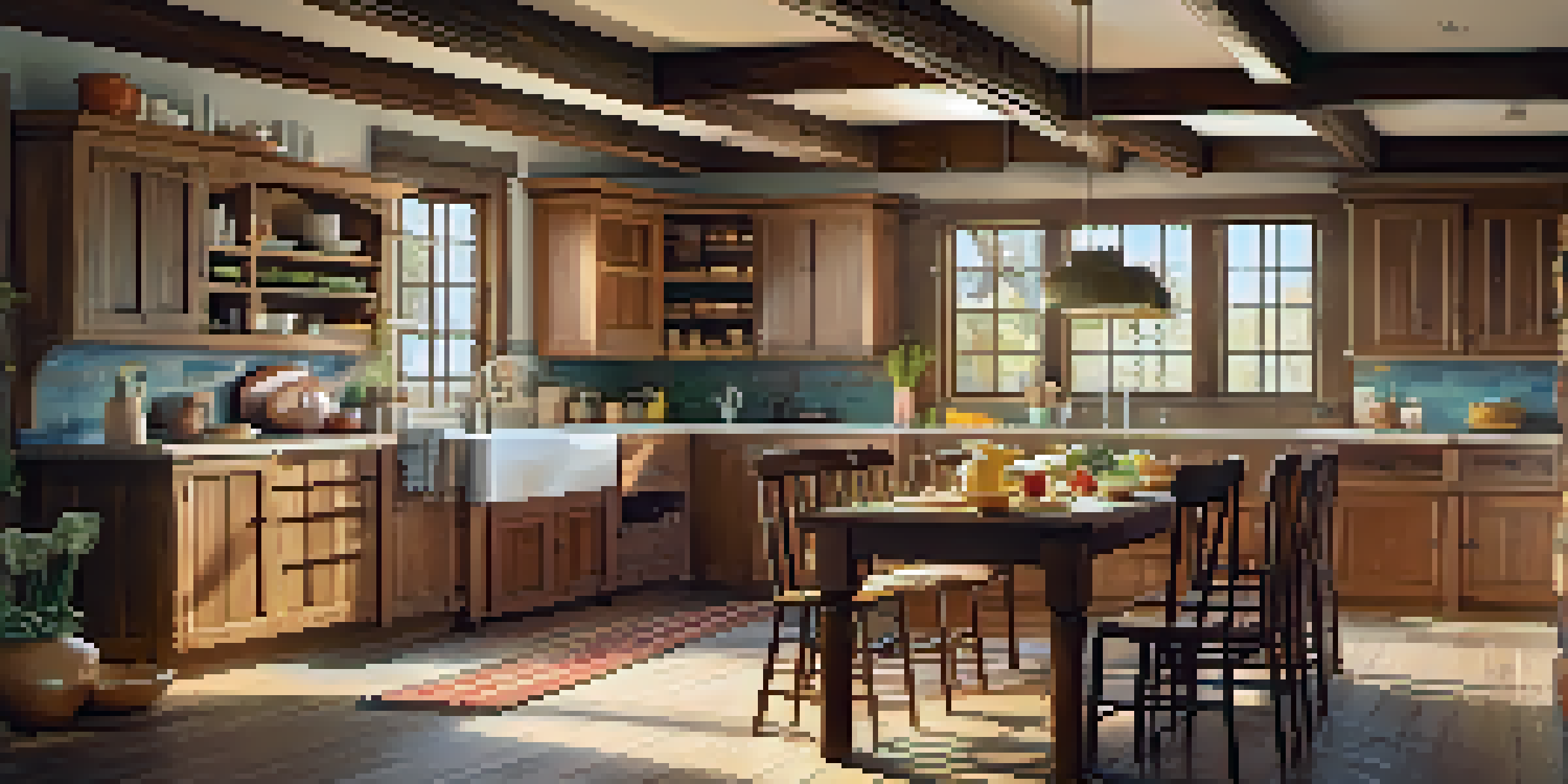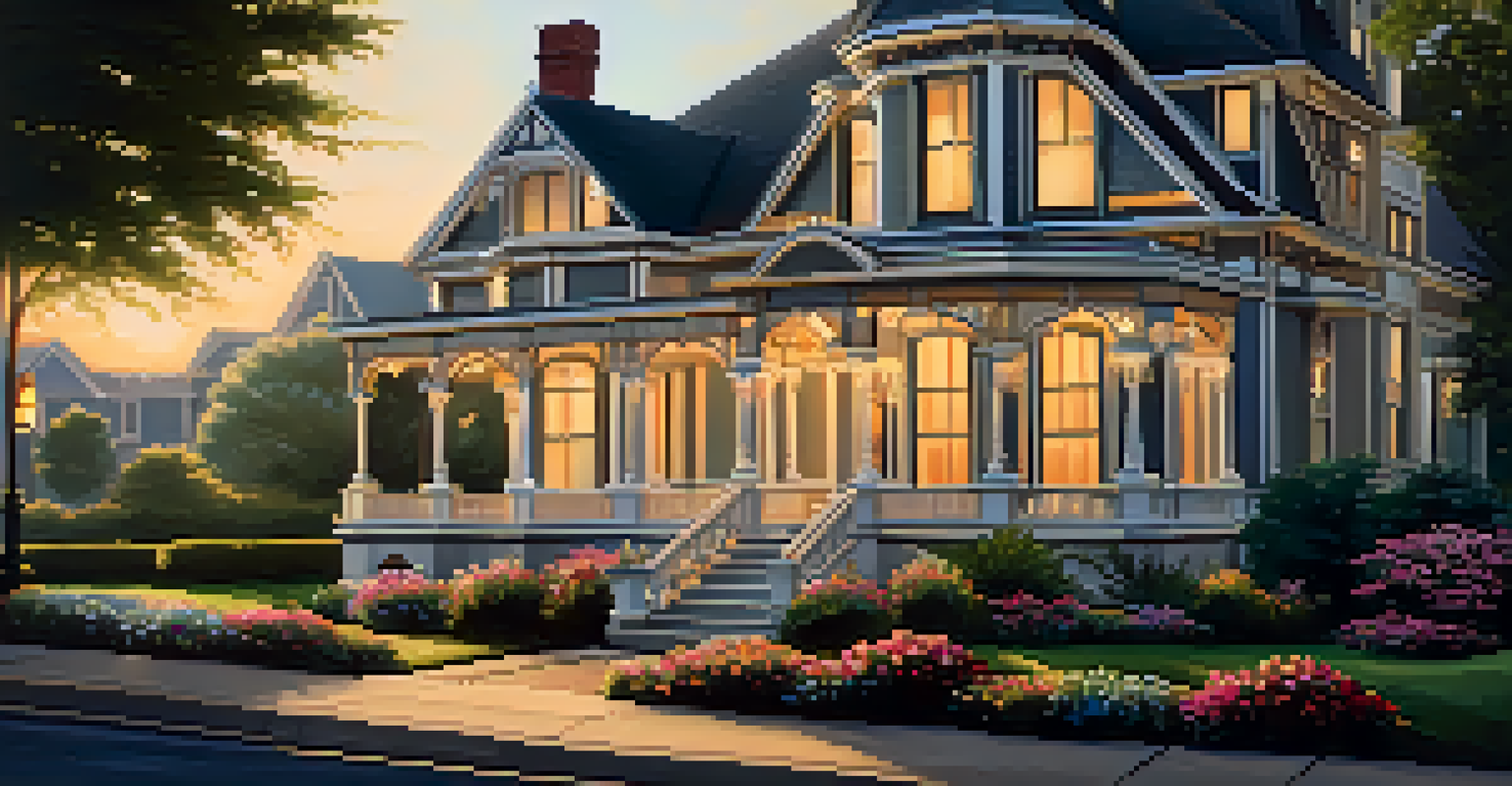The Role of Nostalgia in Home Buying Preferences

Nostalgia: A Powerful Emotion in Home Buying
Nostalgia is more than just a fond memory; it's a powerful emotion that can significantly influence our decisions, including where we choose to live. When buyers step into a home, they often imagine their past experiences and how those might be replicated in a new space. This emotional connection can lead to a stronger attachment to a property, making it more likely that they will make an offer.
Nostalgia is a file that wipes out the unpleasant parts of life.
For instance, a young couple may find a home with vintage features reminiscent of their grandparents' house appealing. The memories associated with that home can evoke feelings of comfort and warmth, placing that property higher on their list of favorites. Therefore, real estate agents who understand these emotional triggers can tailor their presentations to highlight nostalgic elements.
Ultimately, nostalgia can serve as a guiding star in the home-buying journey, helping buyers navigate their options while also creating a sense of belonging. This emotional resonance is crucial as it often drives the decision-making process, making nostalgia a key player in real estate.
The Impact of Childhood Memories on Home Choices
Childhood memories play a pivotal role in shaping our tastes and preferences, especially when it comes to buying a home. Many buyers seek out features that remind them of their formative years, whether it's a cozy kitchen for family gatherings or a backyard perfect for play. This connection can evoke feelings of safety and security that are hard to replicate.

For example, a buyer who grew up in a suburban neighborhood with tree-lined streets may prioritize similar characteristics in their own home search. They might be drawn to houses that evoke a sense of community and familiarity, even if those neighborhoods are miles away from where they grew up. This desire for comfort often drives buyers to look for homes that resonate with their past experiences.
Nostalgia Shapes Home Choices
Emotional connections to past experiences can significantly influence buyers' preferences and decisions in the home-buying process.
As buyers articulate their preferences, they may not even realize how deeply their childhood memories influence their choices. This unconscious connection often leads them to homes that feel right, even if they can't pinpoint exactly why that is. Understanding this nostalgia can help real estate professionals better cater to their clients' needs.
Architectural Styles That Spark Nostalgia
Certain architectural styles have a unique ability to evoke nostalgia, as they often remind us of a different time. For instance, Victorian homes with their intricate details can transport buyers back to an era of elegance and charm. Similarly, mid-century modern homes may remind buyers of their parents' or grandparents' homes, creating an emotional connection that goes beyond aesthetics.
The past is never dead. It's not even past.
When buyers encounter these styles, they may feel an immediate sense of familiarity and warmth. This emotional response can transform a mere property viewing into a heartfelt experience, influencing their decision to pursue that home further. Real estate listings highlighting these nostalgic features can stand out in a competitive market.
Moreover, nostalgia in architecture isn't just about looks; it can also evoke memories of times spent with loved ones. When buyers see a home that resembles one from their past, it can conjure feelings of happiness and connection, making them more inclined to envision their future there.
Nostalgia and Community: The Neighborhood Factor
The sense of community can be a significant aspect of nostalgia when it comes to home buying. Buyers often seek neighborhoods that remind them of their childhood or that reflect their values and lifestyle. Familiarity with local parks, schools, and shops can trigger positive memories and feelings, making certain areas more appealing.
For instance, a buyer who fondly remembers summer days at the local park may prioritize finding a home near similar green spaces. This connection to community and shared experiences can influence where they choose to settle down. As a result, neighborhoods with a strong sense of history and belonging often attract buyers looking to replicate those cherished experiences.
Architectural Styles Evoke Memories
Certain architectural designs can trigger nostalgic feelings, making homes more appealing by resonating with buyers' past.
Understanding the role of community nostalgia can help real estate agents guide clients toward neighborhoods that resonate with their past. By showcasing local amenities and the community's character, agents can create a compelling narrative that speaks to buyers' emotional ties.
Nostalgia Marketing in Real Estate
Marketing strategies that tap into nostalgia can be incredibly effective in the real estate sector. Agents and agencies that emphasize the emotional aspects of homeownership can create a deeper connection with potential buyers. By showcasing properties in a way that highlights their nostalgic value, sellers can make their listings more appealing.
For example, using storytelling in advertisements can evoke memories associated with family gatherings or childhood adventures. This approach can help buyers envision their own lives unfolding in that space, enhancing their emotional investment in the property. Additionally, incorporating visuals that resonate with nostalgia, such as family-friendly spaces or vintage decor, can further capture buyers' interest.
Ultimately, nostalgia marketing can differentiate a listing in a competitive market. By appealing to buyers' emotions, real estate professionals can foster a stronger connection and increase the likelihood of a sale.
Challenges of Nostalgia in Home Buying
While nostalgia can be a powerful motivator, it also presents challenges in the home-buying process. Buyers may become overly fixated on finding a home that replicates their past experiences, potentially overlooking practical considerations or newer properties that might suit their needs better. This tunnel vision can lead to frustration and disappointment in their search.
For example, a buyer might reject a modern home with all the latest amenities simply because it doesn't have the vintage charm they remember from their childhood. This fixation can result in missed opportunities and extended search times, complicating the home-buying journey. It's essential for buyers to strike a balance between nostalgia and practicality.
Community Ties Enhance Appeal
Familiar neighborhoods that reflect buyers' childhood experiences foster a sense of belonging and influence their home choices.
Real estate agents can play a vital role by helping buyers navigate these emotional waters. By encouraging clients to consider various options while still honoring their nostalgic feelings, agents can facilitate a more fulfilling home-buying experience.
The Future of Nostalgia in Home Buying Trends
As we look to the future, nostalgia's role in home buying is likely to evolve alongside changing societal values and preferences. With the rise of remote work and shifting family dynamics, buyers may increasingly seek homes that cater to their emotional needs while also providing modern conveniences. This blend of the old and new could shape future housing trends.
For instance, homes that incorporate vintage design elements alongside contemporary features may become increasingly popular. Buyers might prioritize properties that offer a nostalgic feel while still providing the functionality required for modern living. This fusion could lead to innovative design approaches that appeal to both buyers' emotional and practical needs.

Ultimately, as nostalgia continues to influence home-buying preferences, real estate professionals must remain adaptable. By understanding these trends and responding to buyers' emotional connections, agents can help shape the future of home buying and create lasting memories for their clients.